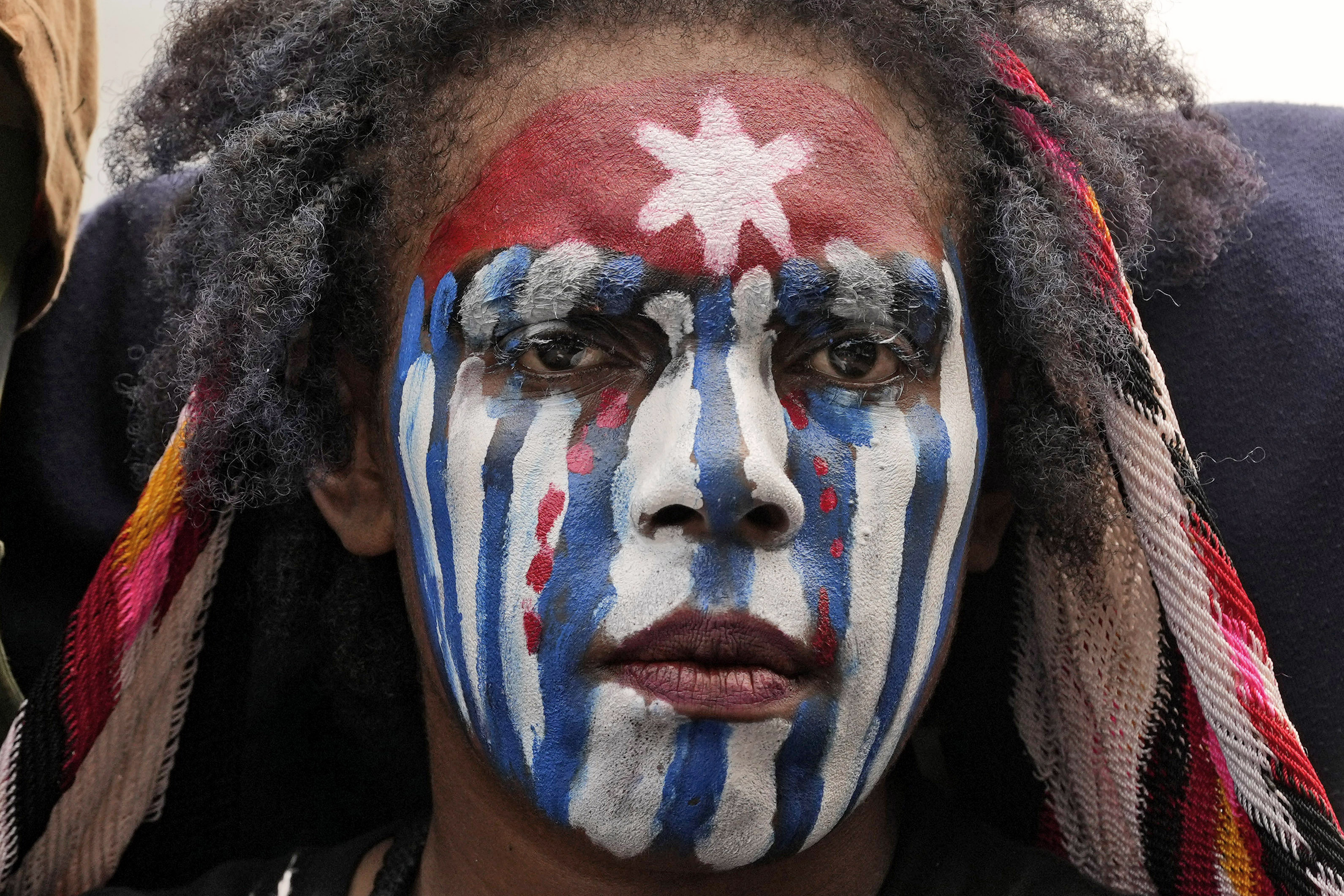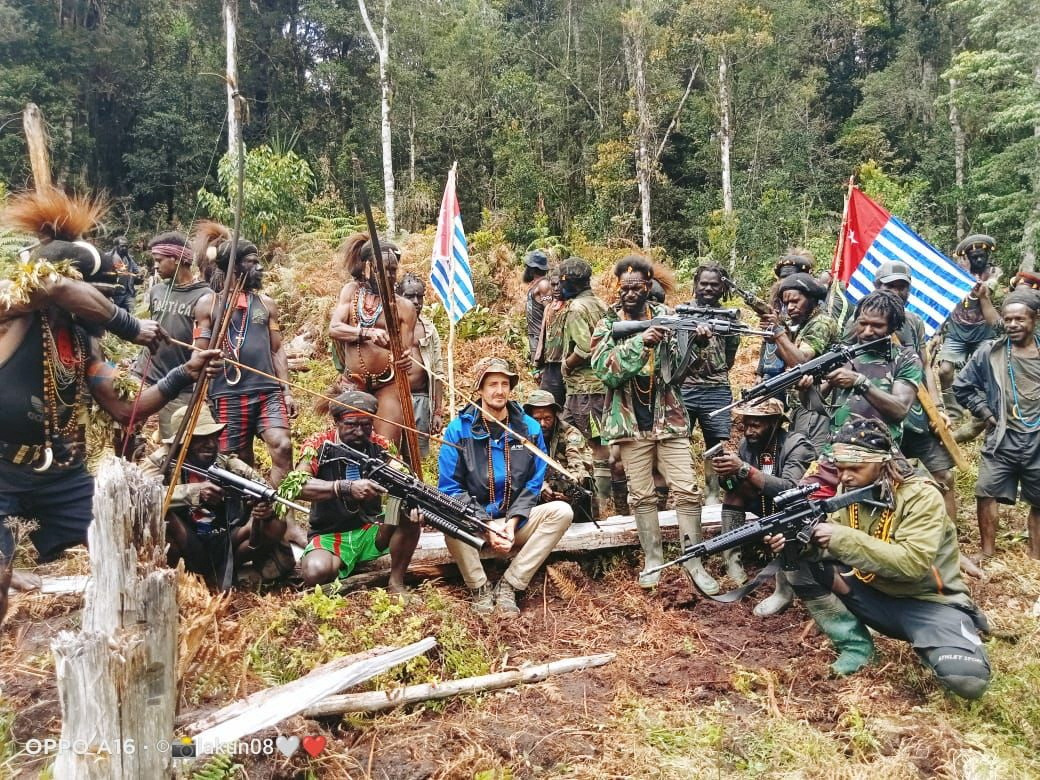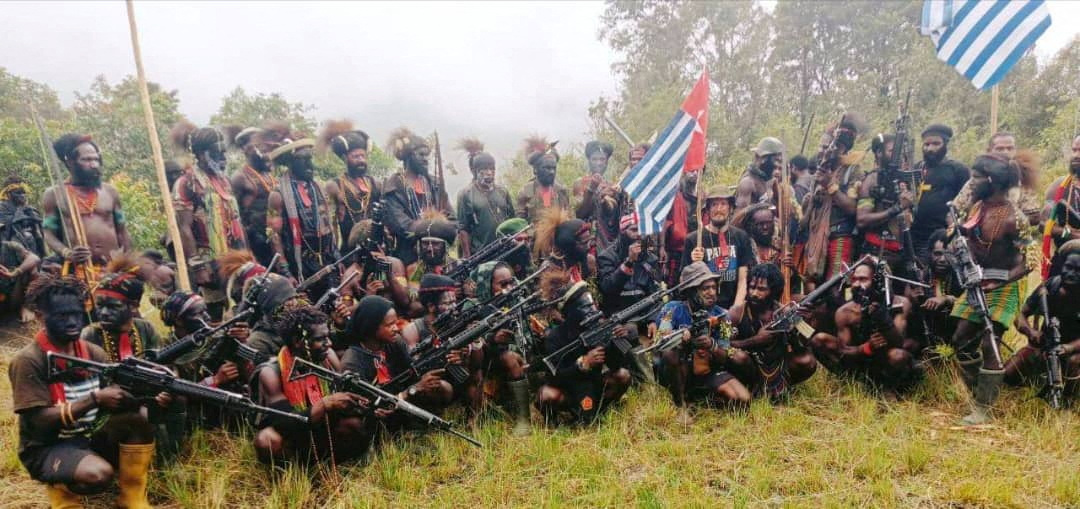
When Phillip Mehrtens landed his single-propeller Pilatus plane on the runway in Paro in the highlands of Papua, it was supposed to be a quick turnaround.
He would drop off his five passengers – all Indigenous Papuans – collect a group of health workers from a nearby clinic and fly back to the booming town of Timika closer to the southern coast.
But as the small plane sat on the runway at the end of February, a group of independence fighters sensed an opportunity. They grabbed Mehrtens, a New Zealander, and his passengers and set the plane on fire.
While the passengers were soon freed, Mehrtens remains in the hands of the West Papua National Liberation Army (TPN-PB), the armed wing of the Free Papua Movement (OPM), which has been fighting since 1969 for independence from Indonesia.
The incident in the remote highlands region of Nduga, one of the most restive areas of a restive province, has drawn renewed attention to one of the world’s least-known and longest-running conflicts.
“It’s a major military hotspot for the Indonesian military and the ‘guerrilla’ army,” Cammi Webb-Gannon, an expert on the situation in Papua at Australia’s University of Wollongong, told Al Jazeera. “He was in the wrong place at the wrong time. It was probably entirely opportunistic.”
The TPN-PB, which has not taken hostages in decades, has said Mehrtens will be released only if Papua is given independence. In the latest video, released last weekend, the pilot said his captors would shoot him if their demands were not met within two months.

Soon after Mehrtens’s abduction, Indonesia deployed police and soldiers into the rugged highland district in an attempt to rescue him. The months since have seen a number of clashes.
Coordinating Minister for Political, Legal and Security Affairs Mahfud MD assured local media that the Indonesian government was making every effort to secure Mehrtens’s release, noting that Jakarta would prioritise a “persuasive approach” but could not rule out “other options”.
Officials in Mahfud’s and the president’s office did not respond to Al Jazeera’s request for comment.
Outsiders, including foreign journalists, international organisations and diplomats require special permission to visit the region, which makes it difficult to get a sense of what is really happening on the ground.
Controversial history
Papua, whose people are ethnically Melanesian, occupies the western half of the island of New Guinea – just 200 kilometres (124 miles) north of Australia – and shares a land border with Papua New Guinea (PNG).
Once a Dutch colony, like Indonesia, Papua was known as Dutch New Guinea and governed separately from Indonesia, which was called the Dutch East Indies.
When Indonesia secured independence in 1949, Papua remained under Dutch control and, inspired by nationalist struggles from Africa to Asia, Papuan activists began to push for independence. They even raised their own flag – the now-banned Morning Star – and established other symbols of statehood.
But independence was anathema to Indonesia, which saw Papua as an integral part of its territory.
Negotiations at the United Nations secured an agreement in 1962 that gave Indonesia control but required it to consult the Papuans if it wanted to formally incorporate the territory within its borders.
Seven years later, after Indonesia had banned the Papuan flag and disbanded the ruling Papuan Council set up by the Dutch, the issue was put to a referendum.
The Act of Free Choice was a time of “hope” for many Papuans who thought they would finally have a say in their destiny, according to Emma Kluge, an expert on anti-colonial activism and decolonisation in the Pacific at the European University Institute.
But when the vote took place on August 2, 1969, only about 1,000 Papuans were allowed to take part out of more than 815,000 people living in the territory at the time.
The controversial result came out in favour of Indonesia, which made Papua the country’s 26th province and renamed it Irian Jaya – igniting a low-level rebellion that has rumbled ever since.
While Jakarta maintains Papua is an integral part of the archipelago – a December 2021 report championing President Joko Widodo’s initiatives in the province noted several times it had “always” been part of Indonesia – Papuans say the territory’s wealth of natural resources is the real draw.
Most well-known is the Grasberg mine, one of the world’s largest deposits of gold and copper, which is controlled by Jakarta in a deal with the United States’s mining giant Freeport-McMoRan.

A new gold mine, known as the Wabu Block, is also under development in Intan Jaya, an area of Papua that Amnesty International said in a report last year had become a “hotspot of conflict and repression”.
A landmark report – the Papua Road Map – published by the Indonesian Institute of Sciences (LIPI) in 2009, advised the authorities to focus on four areas it had identified as the causes of the instability, including marginalisation of Papua’s Indigenous people, a lack of social infrastructure development including schools and clinics, a failure to address the territory’s widespread political violence and unresolved abuses of human rights.
But like presidents before him, Widodo, popularly called “Jokowi”, has put his faith in economic development to help solve the conflict, championing projects such as roads, airports and stadiums.
Benny Wenda, who escaped prison in Indonesia in 2002 and was granted political asylum in the United Kingdom, now leads the United Liberation Movement for West Papua (ULMWP), an alliance of the territory’s pro-independence political movements established in 2014.
“Business is Indonesia’s main objective in West Papua. They use violence as an excuse to displace the traditional landowners who have lived there for thousands of years and then build huge developments like Wabu Block to grab our resources. They create and use violence to justify military control,” Wenda told Al Jazeera in an emailed response to questions.
“It is theft and it poisons our land – like in Timika, a town that feeds the Grasberg mine. The river is dead there.”
Such large-scale projects have also seen the mass movement of other Indonesians into Papua, reducing the proportion of Indigenous people in the population.
About half the people now living in Papua are originally from other parts of the archipelago, Kluge said.
“They are slowly displacing people from the land and as a population, and that makes things much more complicated,” Kluge told Al Jazeera.
Highland tension
Nduga, whose people were largely cut off from the outside world until Christian missionaries arrived in 1962, has long been at the heart of the conflict.
The area is renowned for its cultural diversity and dominated by two Indigenous tribes – Kogoya and Wenda – who have presided over the independence movement through successive generations.
ULMWP leader Wenda, whose father – also a rebel leader – was killed by the military in 1997, has been leading a diplomatic push for independence from exile. When Mehrtens was taken hostage, Wenda was in Vanuatu addressing leaders of the Pacific Island Forum on the issue of self-determination.
He argues it is time for the international community to step up, insist the UN High Commissioner for Human Rights be allowed to visit Papua and consider sanctions on key mining projects.
“The world must realise this is colonial development and an illegal occupation,” he told Al Jazeera.
The current leader of the TPN-PB, declared a “terrorist group” by Indonesia in 2021, is Egianus Kogoya, the youngest son of the group’s former leader Silas Kogoya.
The most recent surge in violence can be traced back to 2018 and a TPN-PB attack on a controversial highway project in which some 24 Indonesian construction workers were killed.
The armed group said the men – working on a road through the highlands to connect the coast with the interior – were spies for the government in Jakarta.
Allegations of racism against Papuans have also heightened tensions.
In August 2019, dozens of Papuan students at a university in Surabaya, Indonesia’s second-largest city, were arrested by police after they were accused of desecrating the Indonesian flag.
The students said mobs had besieged them in their dormitories, calling them “monkeys”, igniting anger in Papua itself where more than a dozen people were killed in violent protests that prompted Indonesia to once again deploy more troops to the area.
Amnesty International Indonesia says at least 179 civilians were killed in the fighting between 2018 and 2022, along with 44 Indonesian soldiers and police, and 23 fighters.
Political initiatives have added to the deepening suspicion with Jokowi’s recent amendments to the 20-year-old Special Autonomy Law, which has further divided the region and are seen by independence-minded Papuans as an attempt to expand the central government’s role in Papua.
With little sign that diplomatic initiatives are having an effect internationally, younger fighters led by people like Kogoya, appear increasingly willing to take more radical steps to achieve their aims.
Since the TPN-PB kidnapped Mehrtens, they have released a series of photos and videos of the New Zealander, showing him wearing “Free Papua” shirts and holding the Morning Star flag, surrounded by fighters armed with guns, bows and arrows.
“West Papua is officially under martial law,” Wenda wrote on Facebook earlier this month.
“This is what the new ‘combat alert’ announced by the Indonesian military last month means in practice. All of West Papuan life is governed by military checkpoints, arbitrary arrests, and daily humiliation and fear. We live our lives under the scope of a sniper rifle.”

Nearly four months after Mehrtens was kidnapped, New Zealand says it is aware of the latest videos and photos and is doing “all it can” to secure his release.
“The welfare of Mr Mehrtens is our top priority,” a Ministry of Foreign Affairs and Trade spokesperson said in an email to Al Jazeera.
The last major crisis involving foreign hostages was the Mapenduma Incident in 1996 when TPN-PB members – including Egianus Kogoya’s father – abducted a group of Indonesian and European environmental researchers.
Talks continued for months with the help of the International Committee of the Red Cross, but after more than five months Indonesia opted for a military solution to free the hostages.
Two of the researchers – both Indonesians – were killed.
Analysts say that nearly 30 years later, there is little to indicate Indonesia has changed its approach.
“They avoid the root causes,” Hipolitus Wangge, a researcher at the Australian National University who was in Nduga in 2019, told Al Jazeera. “The deployment of troops is so typical. In some ways, it’s desperate because they don’t have any other approach to addressing the causes of the conflict.”
Amid a lack of trust between Indigenous communities and the authorities, Wangge sees little chance that Mehrtens’s situation will be resolved soon.
“There’s no middle ground,” he said.







